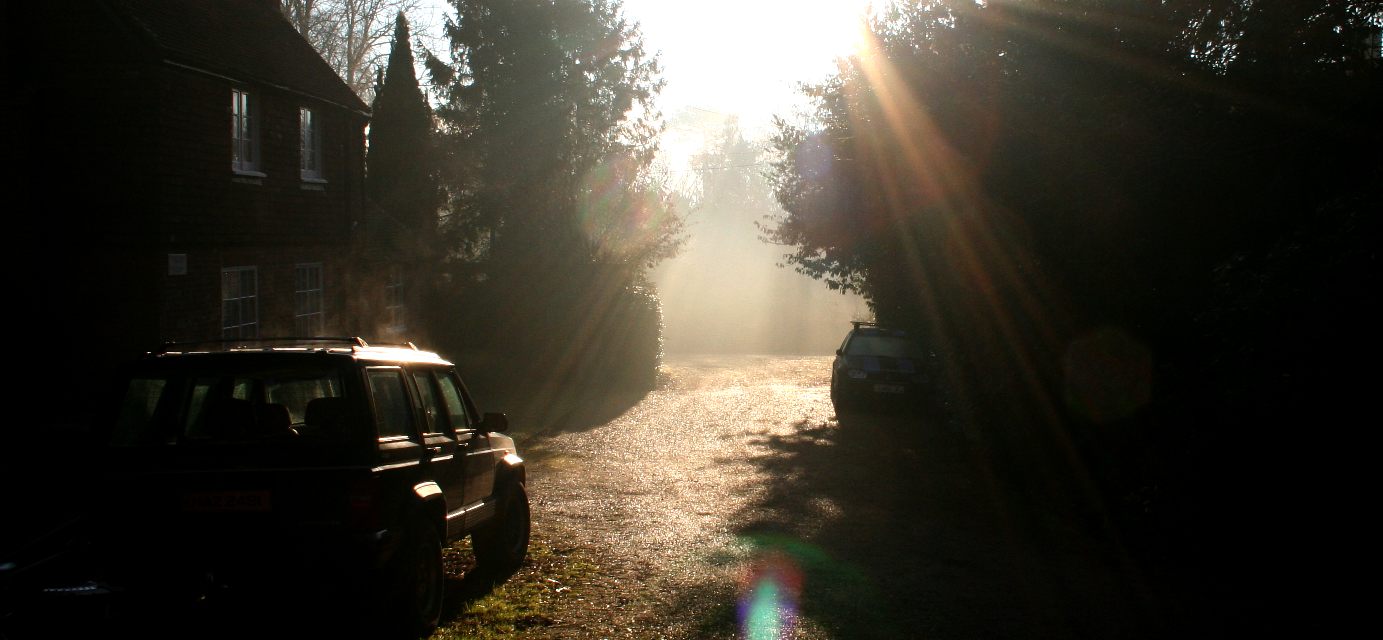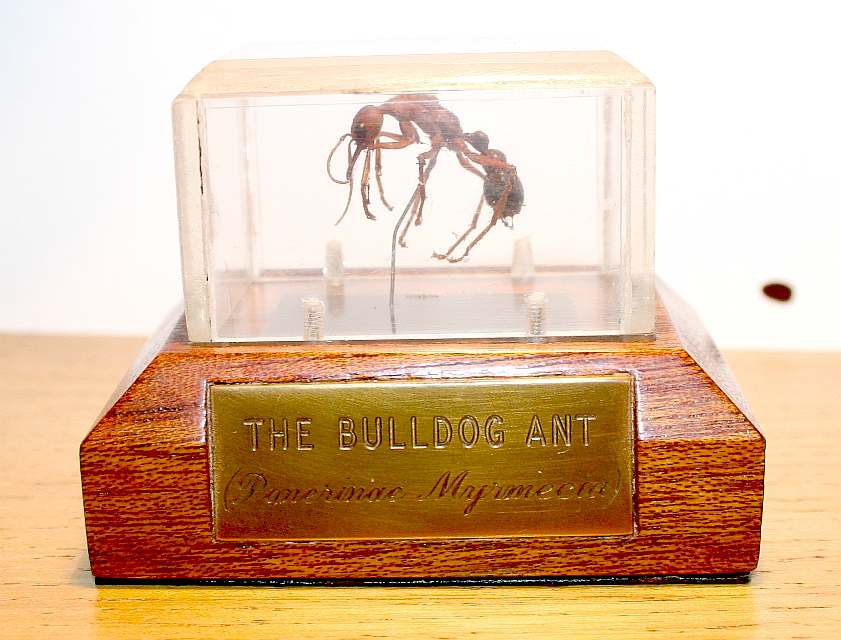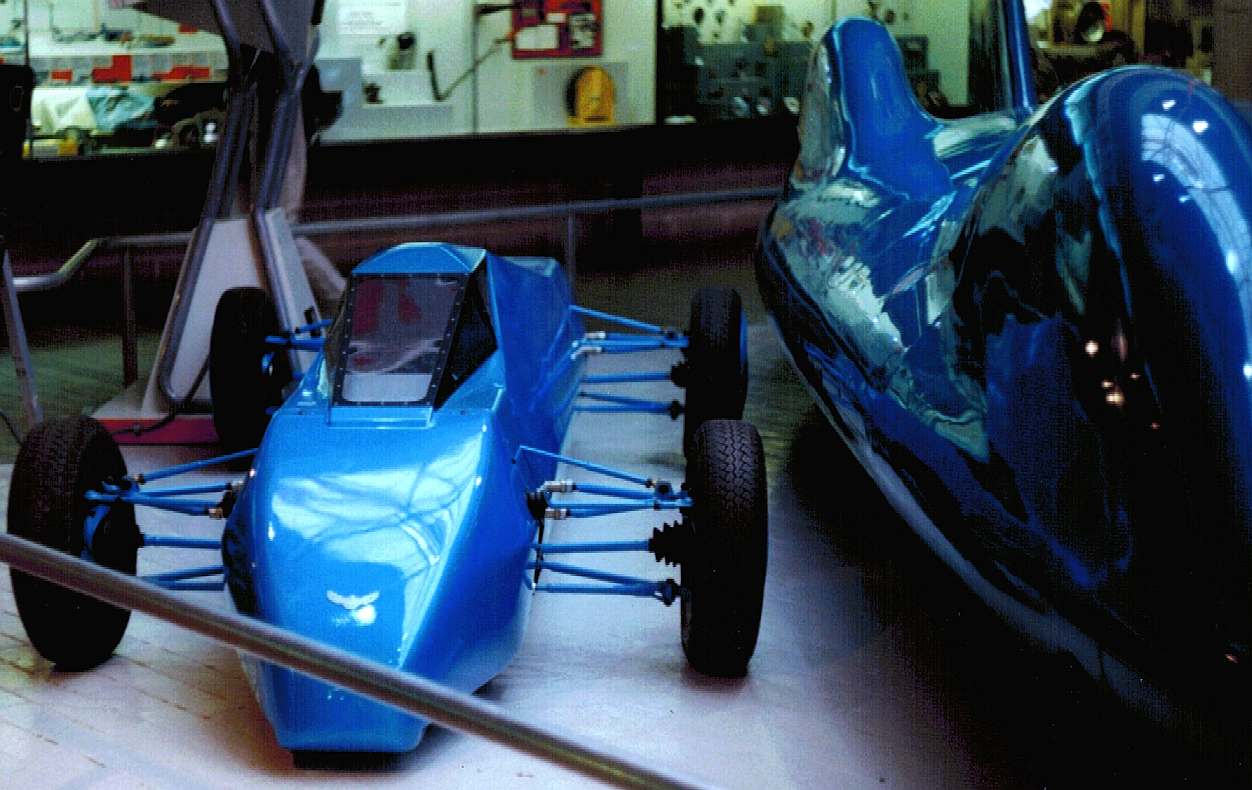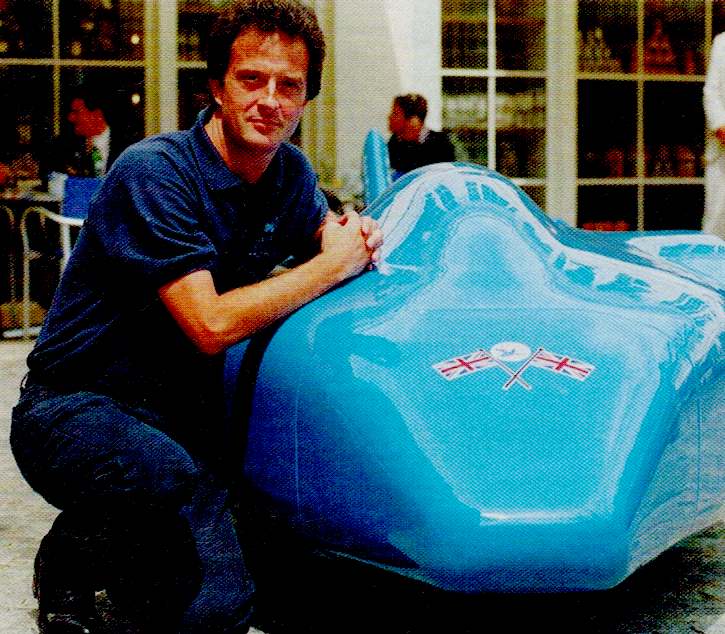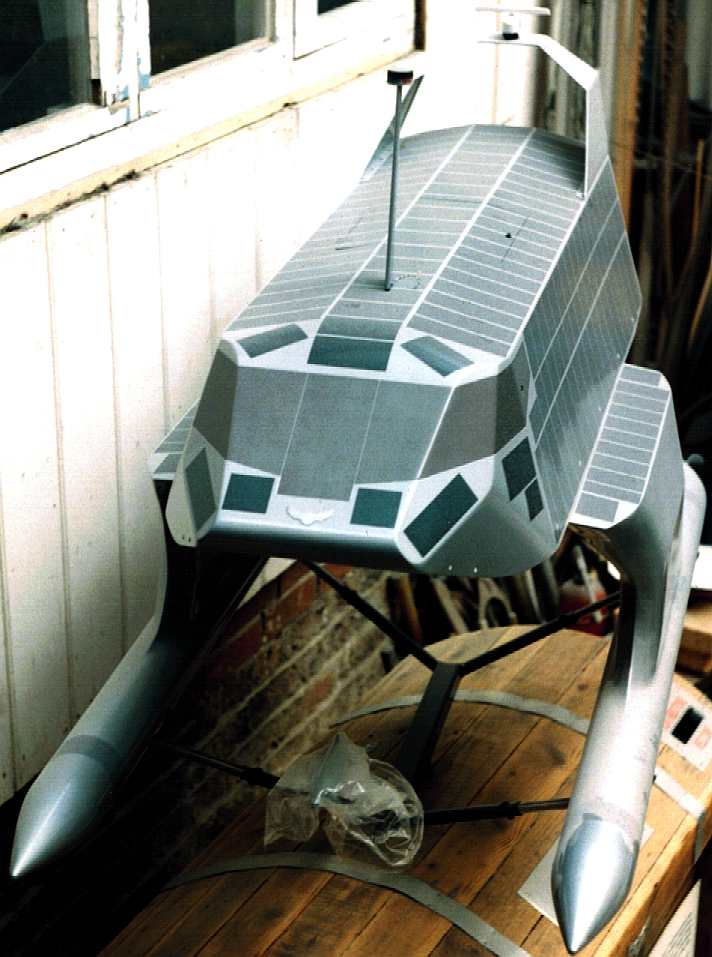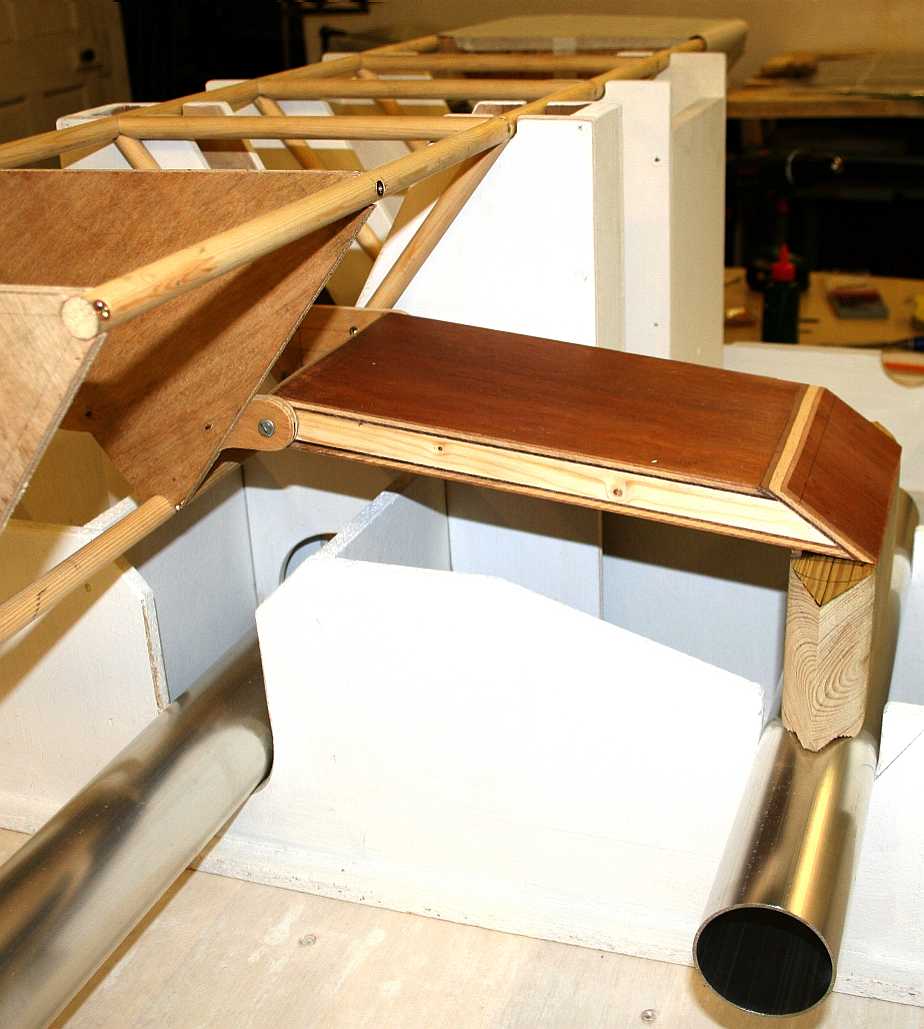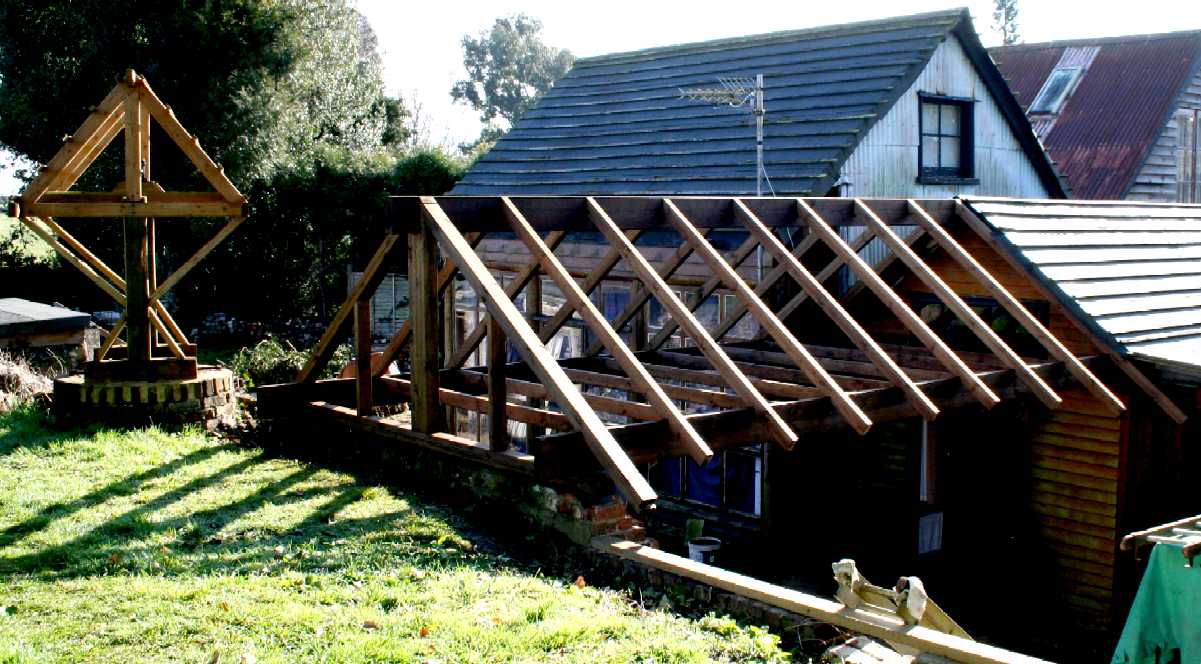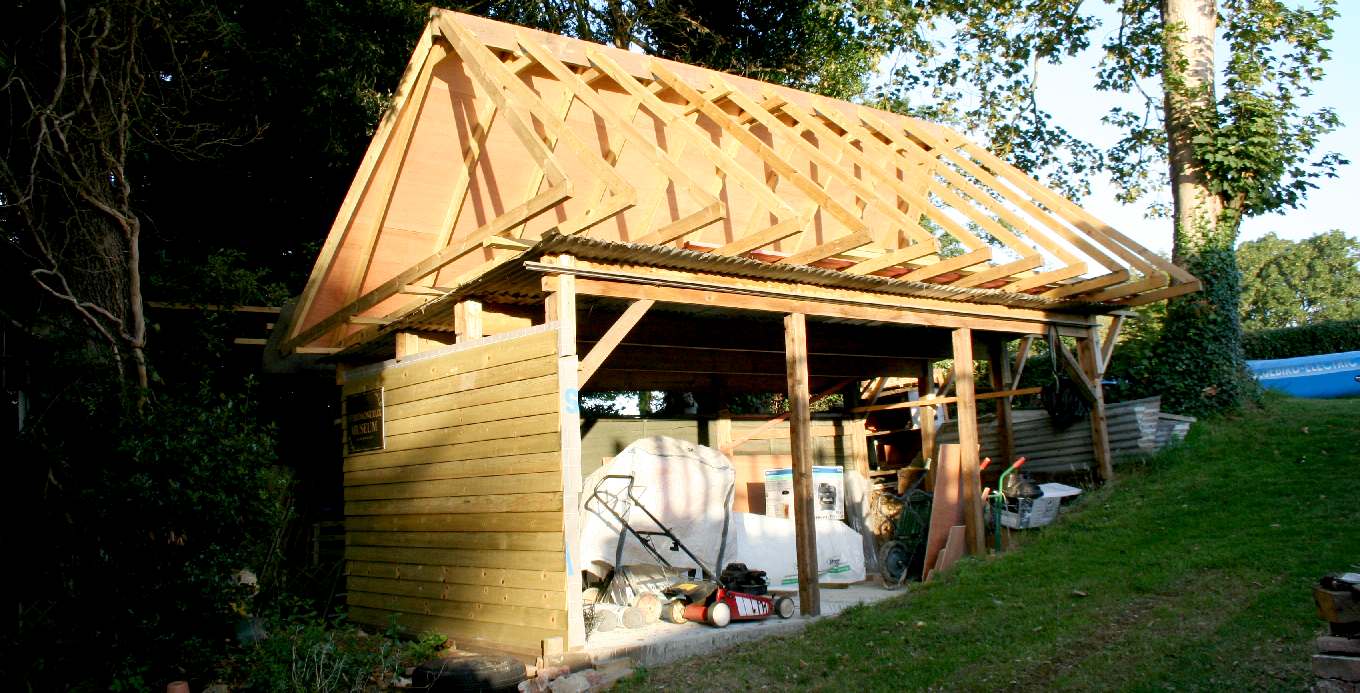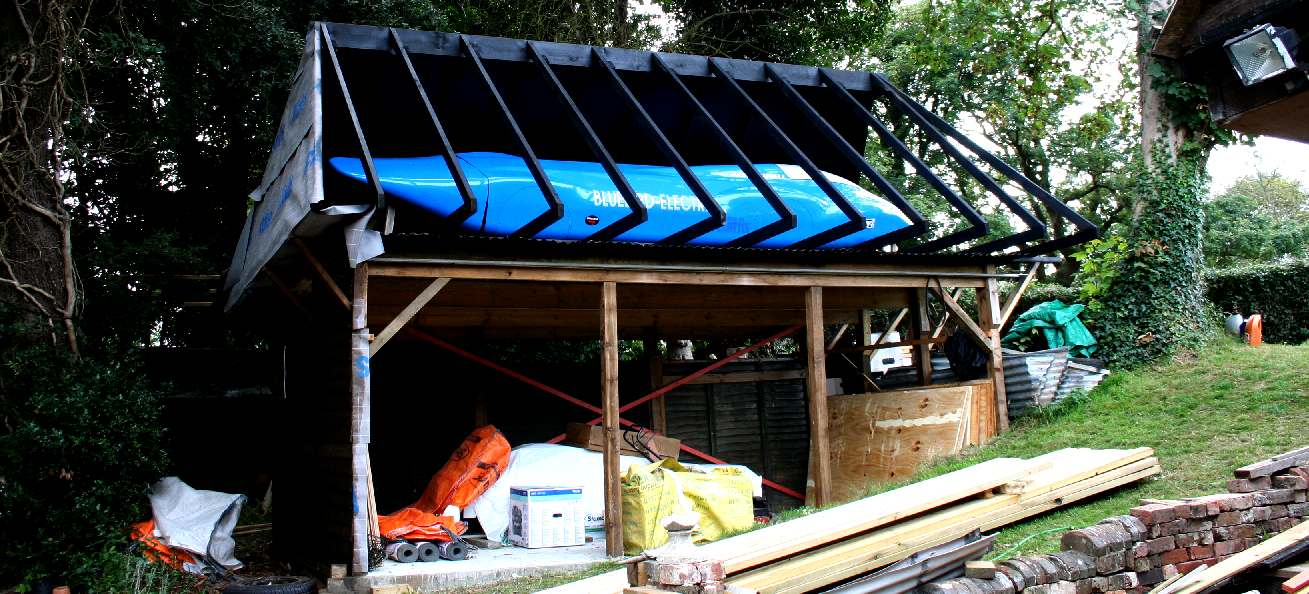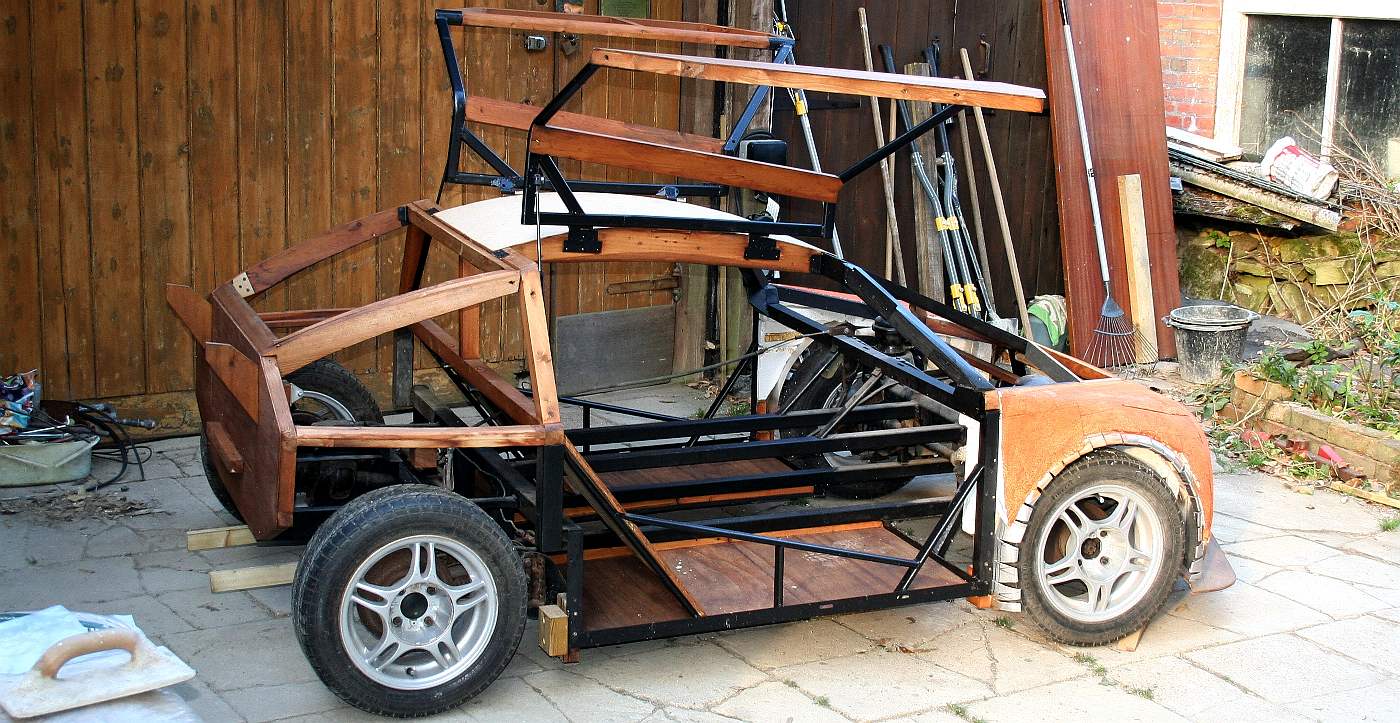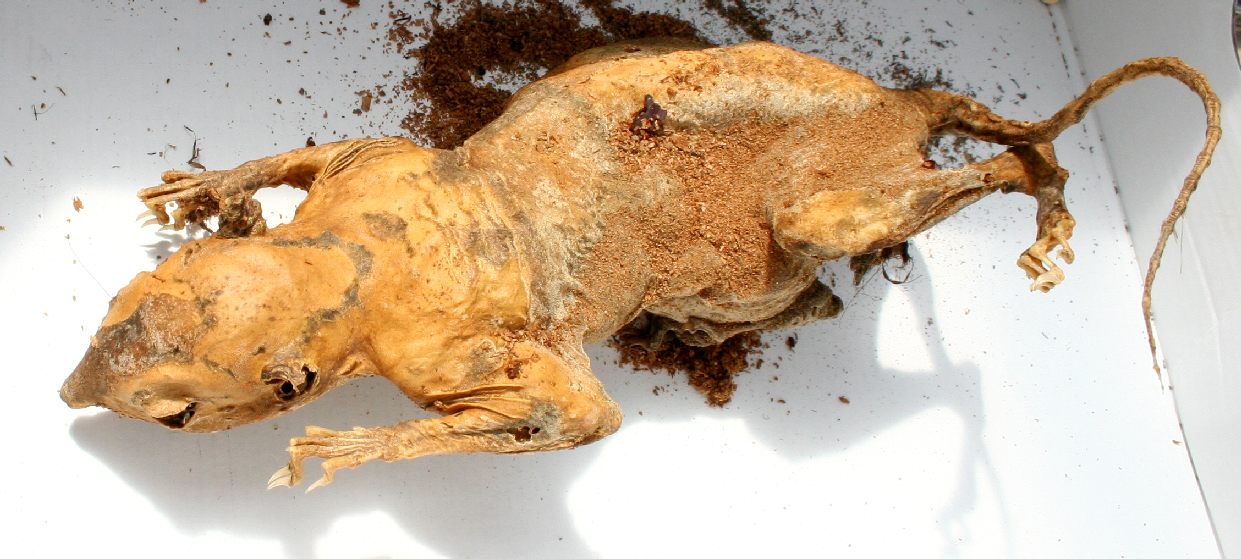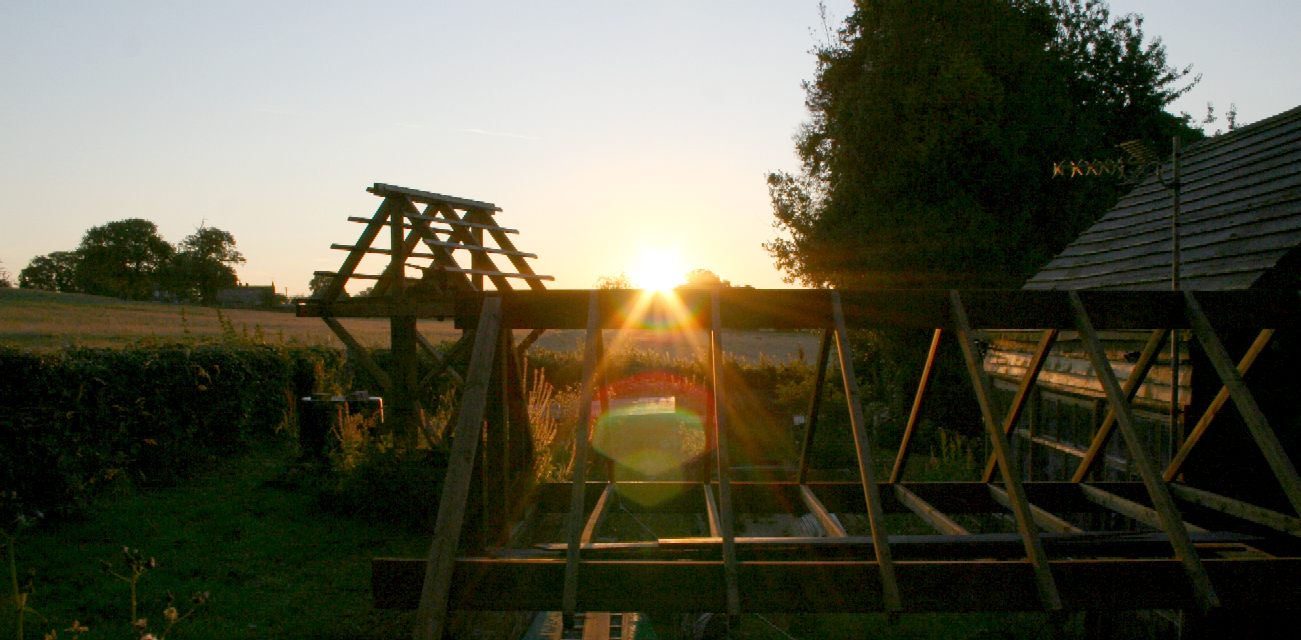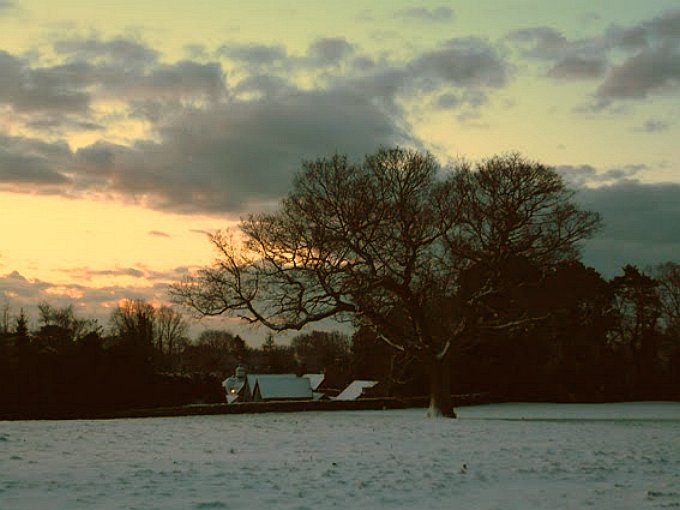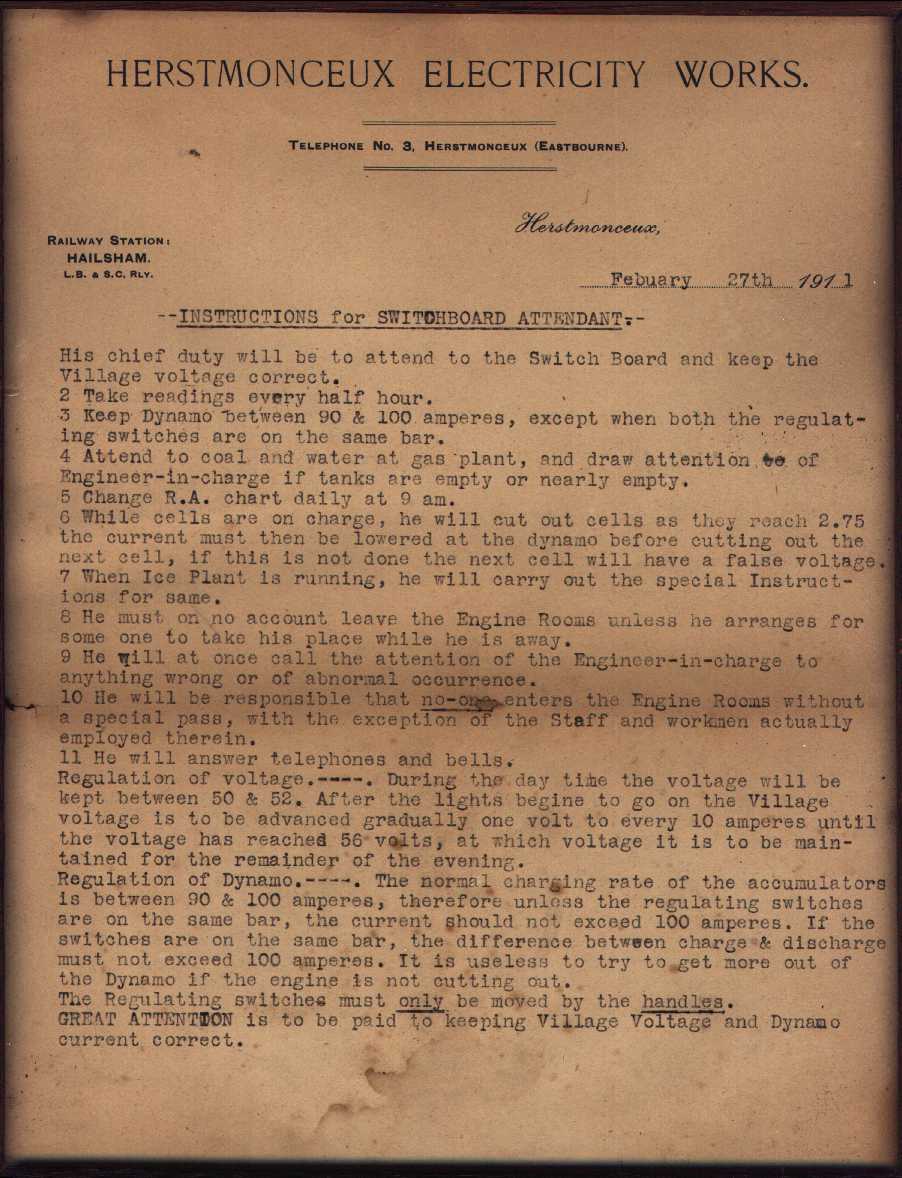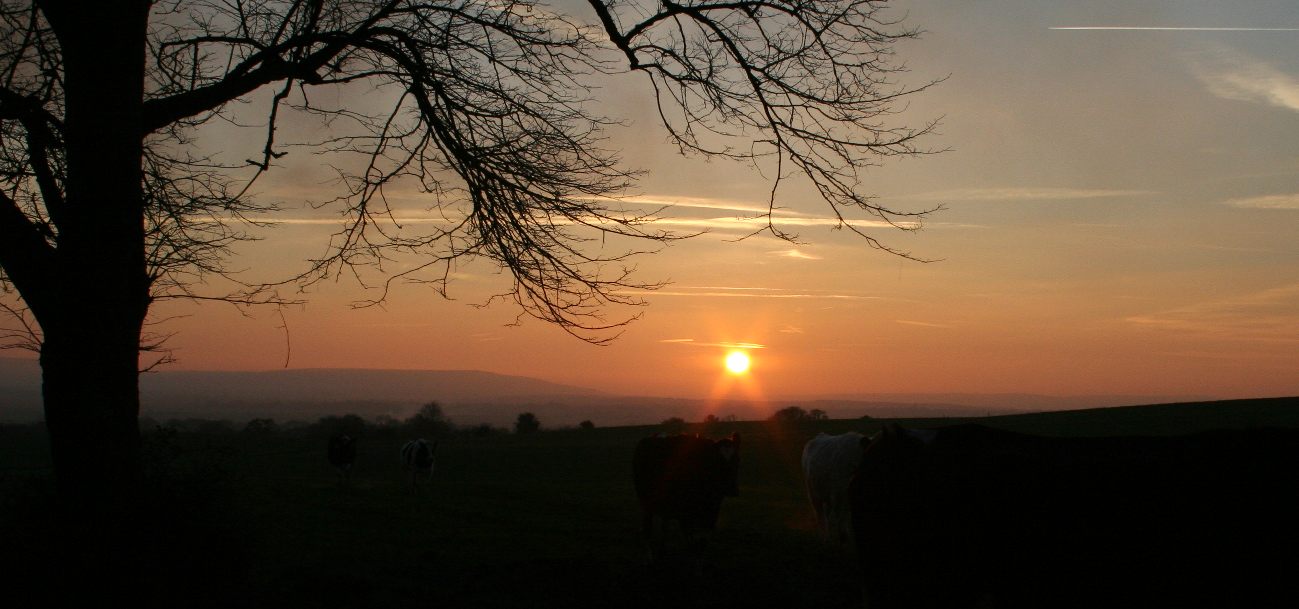|
HERSTMONCEUX SCIENCE MUSEUM - (VIRTUAL) EXHIBITS
|
|
|
A BRIGHT FUTURE - The sun rises over Lime Park in January of 2017. Frost on the Jeep in the foreground is vaporized, causing the roof of the vehicle to steam as the sunshine steaks through the morning mist.
Herstmonceux Museum is a monument to the early electrical generating age according to English Heritage and Historic England, hence the building is itself a feature, but because of insurance, staff and other issues we cannot open to the public in the traditional sense, so are considering sharing the treasures by way of a virtual reality experience online. This little gem of a wooden building once provided electricity to the whole village of Herstmonceux before 1909, generating enough electricity by 1913 for electric cooking and for the village bakery. That in itself is a significant technological achievement for any entrepreneur living in a Sussex backwater, in this case: Charles de Roemer.
This archaeological infrastructure site is now under threat from a planning application to turn the field connecting the village with the generating building, via underground cables that should rightly be listed as monuments.
The only reason that certain emplacements are not listed monuments, is that the Trust and other management concerns do not have an income and cannot therefore operate in a managerial manner to qualify for listing. Indeed, listing would place financial burdens on the Trustees that would be sure to ruin them. The present funding system is not designed to protect small units such as that in Lime Park, which is one reason why we lose so many monuments each year, hence the creation of the Heritage At Risk Register by Historic England.
Instead, the building is on a Monument Protection Programme with archives in London (EH) - that offers some degree of protective status, allied to archives held in Lewes (ESCC). Fortunately, most scientists, while protecting their employed positions in a complex political soup, are also seekers of the truth.
ROBOTICS - A giant robot ant was part constructed at Herstmonceux Museum in the early 1980s. The preserved specimen of Bulldog Ant that was used in the making and design of the robot is some 33 years old and still as good as the day when it was flown in from Australia with a Tarantula and Scorpion for company - both of which it ate.
AUTOMOTIVE EXHIBITS
While most people will be interested in the archaeology of the building as the exhibit, from 1982 onwards a local Sussex inventor produced a remarkable range of machines and other interesting artifacts that demonstrate a wide range of skills and interests to qualify the inventor as a renaissance man, or design genius. The Trust have been fortunate to secure these items as exhibits, some of which are detailed below, and please note that we will be adding to this page as more items are unearthed and need a good home.
AUTOMOTIVE - [LEFT] This was the second car built at Herstmonceux Museum by a local inventor. The first, a joystick car, we unfortunately cannot track down. The Bluebird Electric BE1 is/was the first car to be able to exchange batteries itself with built in patented loading equipment, seen here on display at another famous Museum; the National Motor Museum - Beaulieu. This car was driven by the grandson of Sir Malcolm Campbell for media articles and at the LETEC Awards held at the London Arena, but not during any of the high speed runs on the Polegate Bypass where it achieved around 160mph using high speed motorcycle tires and Lynch electric motors. These are not the tires seen in this picture, about which some people have commented. The tires shown here were ordinary car rubbers on steel rims for delivery purposes only. Thinner racing motorcycle tires were fitted on alloy rims for high speed runs. [RIGHT] - This was the third car built at Herstmonceux Museum by the same local inventor. Arguably one of the most beautiful land speed record vehicles, the Bluebird Electric BE2 is/was the second car in the series to be able to exchange batteries itself with a built in patented battery recharging system. The car is seen here on display in Chelsea, London at the Bluebird Store, then owned by Sir Terence Conran's group of companies. This car was not driven by the grandson of Sir Malcolm Campbell, Don Wales, but was used by him for publicity purposes while a partner with the inventor and while the inventor was promoting Mr Wales - the services for which, he alleges, that he was not paid. These vehicles were the means by which Don Wales (previously unknown) entered the land speed record arena.
NAUTICAL EXHIBITS
With electricity as the underlying theme, the car builder abandoned terra firma for the briny blue. This time solar power was the energy provider. In 1995 a solar boat model was exhibited at Earls Court in London together with a course map of the world that had been calculated to provide energy to circumnavigate the globe at between 7 - 10 knots at the right time of year. In May of 2012 the theory was put to the test by a team from Switzerland on a boat called 'PlanetSolar' when a UIM and Guinness world records were set for the first circumnavigation on solar power.
MARINE - This fully working solar powered SWATH model was exhibited by the inventor at Earls Court, Child Beale and the Eastbourne Arndale centre, before being retired for a more advanced SWASH hull that is much faster. It was built at Herstmonceux Museum from 1994 to 1995. The Trust have now acquired the vessel and the revolving treasure chest mechanism that powered the display.
MARINE - This prototype SWASH model was/is the test-bed for another patent specification by the inventor in 2013, published in September 2014, this time for an autonomous boat that not only gathers energy from nature for propulsion from wind and solar devices, but also navigates the high seas without the need for a crew.
WORKING MUSEUM
In addition to the exhibits above and the original building layout and fabric, the inventor made a number of improvements to the building in line with sustainable, zero carbon living. These improvements contrast against the exhibits and working nature of the building to add extra grist to the inventions on display and the pioneering spirit that many such extraordinary individuals possess, some of which are:
Few people will know that President Lincoln was an inventor and patentee, using his creativity to solve a maritime problem that he had identified. Many people will know that these persons exhibited high degrees of perseverance in the face of adversity. Much of which is at a local level, where politics may not be entirely just. Such happenings may stir you to wonder at what may have been achieved by this man if neighbor ambitions were removed from the equation and local politics had been discrimination free.
ZERO CARBON - The installation of a wooden framed 'solar' conservatory in 2014 and an automatic well pumping system in 2013 for onsite supply of affordable heat and water. If houses are to be truly sustainable, they will have to feature such built-in facilities. This is truly an example of the past showing the way to a better future. the problem with solar heating and electricity production is that for true sustainability the areas are sometimes unattainable in a normal domestic situation. Whereas, the generating buildings have more than enough space to modify for use for domestic heating. Gas and oil fired central heating systems are major contributors to climate change. For this reason there is a presumption in favour of sustainable development as per the National Planning Policy Framework from 2012 (Ref. Rt Hon Greg Clark MP) at paragraphs 152 onwards and this should be reflected in Wealden's Local Plan.
Conserve heritage assets - NPPF Para 178. Local planning authorities should set out a strategy for the conservation and enjoyment of the historic environment, including heritage assets most at risk through neglect, decay or other threats. In developing this strategy, local planning authorities should take into account:
• the wider social, cultural, economic and environmental benefits that conservation of the historic environment can bring; and • the desirability of new development making a positive contribution to local character and distinctiveness.
Support the delivery of renewable and low-carbon energy - NPPF Para 152. To help increase the use and supply of renewable and low-carbon energy, local planning authorities should recognise the responsibility on all communities to contribute to energy generation from renewable or low-carbon sources. They should:
• have a positive strategy to promote energy from renewable and low-carbon sources, including deep geothermal energy
• design their policies to maximise renewable and low-carbon energy development while ensuring that adverse impacts are addressed satisfactorily • consider identifying suitable areas for renewable and low-carbon energy sources, and supporting infrastructure, where this would help secure the development of such sources
• support community-led initiatives for renewable and low carbon energy, including developments outside such areas being taken forward through neighbourhood planning; and • identify opportunities where development can draw its energy supply from decentralised, renewable or low carbon energy supply systems and for co-locating potential heat customers and suppliers. • not require applicants for energy development to demonstrate the overall need for renewable or low-carbon energy and also recognise that even small-scale projects provide a valuable contribution to cutting greenhouse gas emissions; and • approve the application if its impacts are (or can be made) acceptable. Once opportunity areas for renewable and low-carbon energy have been mapped in plans, local planning authorities should also expect subsequent applications for commercial scale projects outside these areas to demonstrate that the proposed location meets the criteria used in identifying opportunity areas.
NEW ROOF - This outbuilding gets (July 2016) a new angled roof that will be used as a to partially protect the BE2 from water and leaf fall from the adjacent trees. A secondary roof keep the BE1 dry. This is not so important for the BE2 where GRP and 2 pack paint is highly weather resistant. The angled roof prevents bird droppings that tend to etch into the paint. The whole unit is to be upgraded as funds and planner allow, to make a store that will last and keep the machinery under cover and so in better condition than would be the case without that shield.
OPEN SHELTER NEARING COMPLETION - The BE2 is installed in the roof space. A laminated glass roof was to have been fitted but the vehicle may remain on open display like this. Here the ancillary domestic building or machine store is seen nearing completion. The store was completed with roofing in September 2016 and has stood the test of time. Building regulation approval is not normally needed for buildings like this but be careful to measure the distance from nearby domestic use, where the 1 and a 1/2 rule may apply. A building should be 1.5 times the height away from any building normally frequented. We understand that Councils may relax these conditions in certain circumstances but have no details as to the criteria. This beautifully streamlined electric car is spot lit for cleaning and other maintenance. We call this our observatory. Later it was decided to enclose the front a tad more, but we may revert to the Sept 16 condition if that is what planners want us to do and this will not detract from the storage, but may not be so much in harmony with the efforts to restore the generating buildings, where full restoration of all three generating ranges could be funded in 2018 if there is a way to keep the wooden construction authentic. This is currently the subject of correspondence with Historic England and the County Archaeologist.
GULL WING - This incredibly compact electric cars features gullwing doors and when fully loaded, four wheel drive and 300hp (200kW), making it potentially one of the fastest electric road cars. It was designed to commemorate the 50th anniversary of Donald Campbell's land and water speed records in 1964. Copyright photograph © July 5 February 2017. You will need the permission of the Lime Park Heritage Trust to be able to use these pictures, except for educational and use and private study.
MUMMY FIND JUNE 2017 - This is the best preserved of a pair of squirrels that were preserved in the sawdust filling in the roof at Herstmonceux Museum. Workers found the remains while preparing the old roof timbers to take slates. Sawdust was used as an insulator for keeping the buildings cooler in the summer and warmer in the winter. Copyright photograph July 3 2017 all rights reserved Lime Park Heritage Trust.
CONTACTS
Lime Park East Sussex BN27 1RF, UK
Telephone: 0044 1323 831727 Email: energy@solarnavigator.net
Herstmonceux Museum, including Campbell Hall, is managed by the Lime Park Heritage Trust and other Trusts and not-for-profits working together to conserve our heritage.
We had planned to open the site to the public, but this is no longer possible with Wealden District Council pressing us for additional costs that would burden the project unduly. The good news is that in the digital age we hope to be able to offer a virtual tour of the site and exhibits once funding is achieved for that.
SUNRISE @ HERSTMONCEUX SCIENCE MUSEUM - June 21 2014, 5:00am on the morning of a fabulous summer dawn, reflecting sunlight off buildings to give an orange glow.
LINKS
Day out with the kids Museums-and-Galleries http://www.sussex-southdowns-guide.com/sussex-museums http://www.sussextourism.org.uk/ www.sussexpast.co.uk/properties-to-discover/lewes-castle Brighton Royal Pavilion, Libraries & Museums http://www.english-heritage.org.uk/ http://www.thekeep.info/ http://www.heritagegateway.org.uk/gateway/ http://www.eastsussex.gov.uk/environment/archaeology/default.htm
WINTER SUNRISE - January 2009. The snow has settled overnight on the hamlet of Flowers Green. Lime Park is a private estate off Church Road, on the way to Herstmonceux Castle. The generating buildings are an attractive and familiar feature in the landscape.
ANTIQUE DOCUMENT - This is an amazingly rare find, a document dated from February of 1911. These are one of a series of instructions to the engineers who were operating the generating machinery in Lime Park. You may notice that in addition to generating electricity for the village, that plant was in situ for making ice. Luxury indeed in 1911.
HERITAGE INDEX A - Z
AVIATION - EASTBOURNE BARCLAYS BANKING LET DOWN - MISSING ACCOUNT MONEY BARON CARL VON ROEMER & CHARLES de ROEMER CAMPBELL HALL - BLUEBIRD ELECTRIC CARS GAS ENGINES - COAL CONVERSION, INTERNAL COMBUSTION OBSERVATORY - HERSTMONCEUX CASTLE SOLAR LADY - STATUE
|
|
|
This website is Copyright © 2023. All rights reserved. All other trademarks are hereby acknowledged. Contact Us www.cherrymortgages.com
|
